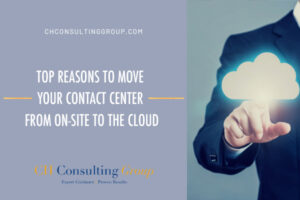For many organizations out there, a customer experience strategy may not be fully developed due to misconceptions that it is mainly relevant in the retail or hospitality industry. Many even think that the B2C (Business to Consumer) market is the only one that benefits from a streamlined Customer Experience. I’ll tell you now – they are wrong. According to a recent Gartner research study, many organizations are in the midst of a seismic shift in priorities within their organization. In fact, it is projected that by the end of 2018 more than half of all businesses will be implementing significant changes in their business models that will have a big impact on the overall customer experience. Many of the projects will include customer feedback analysis, Voice of the Customer, and implementing Self-Service tools.
Pfizer Did It
If you are still not convinced that the value of a solid customer experience strategy is not just limited to retail, let’s take a look at one company in particular–Pfizer, an American pharmaceutical company that is primarily B2B (Business-to-Business). Just like any other company, Pfizer wants to reach out to customers but their interactions aren’t traditional in the sense that they have a brick and mortar storefront like Starbucks. Nevertheless, Pfizer still wants and needs to communicate well with its customer base which is comprised of patients, pharmacies, doctors, and medical representatives.
So, how do you deliver an excellent customer experience without having a traditional retail presence?
Pfizer realized that they could not possibly deliver a one-size-fits-all customer experience. Their customer base varied widely so using a cookie cutter approach would surely alienate many of their customers. To start, Pfizer worked tirelessly on data gathering to assist with their customer identification initiative – that is being able to recognize individual customer segments. They were able to use these insights to gain a deeper understanding of their customers, their roles, challenges and decision making capacities. From there, they were able to carefully craft a customer experience strategy that provided them with a clear pathway to how to best reach and serve their customers. As the last piece of the Customer Experience puzzle for success, Pfizer made a commitment to engaging with their customer base across several channels. By taking the time to understand the customer journey and developing a solid engagement strategy, Pfizer is able to deliver an excellent customer experience in the B2B space.
What Non-Retail Businesses Can Learn from Retail
I know that I’ve been talking about how Customer Experience is not limited to retail, but it would be foolish to ignore what retail businesses are doing right. So, how can a B2B or non-retail business improve customer experience? What can they learn from retail companies? Here are a few examples:
Lessons from Disney
Disney’s website is fully responsive. If you want to access a service, buy a product, or just interact with their brand you can do it in person, the TV, your phone, your computer, and on your mobile device. They keep track of your account and they can custom tailor your experience to your individual needs.
Lessons from Starbucks
The company created a mobile app where customers can make their purchases and just pick up their coffee when they arrive at the store.Their customers are allowed to pay through a Starbucks card. Customers also earn rewards through their purchases – thus improving customer loyalty.
Lessons from Foot Locker
Customer feedback is equivalent to gold when it comes to fine tuning your Customer Experience. Foot Locker is known in the industry for taking the time to develop targeted surveys for their customers. They have even cut down on their number of questions when their survey revealed that customers thought the survey was too long! Also, in addition to surveys, Foot Locker uses text analytics to further analyze their customer’s comments. Another thing to note is that Foot Locker incentivizes their customers to take their surveys. This can be in the form of a discount such as $10 off their next order if they fill out the survey.
Actionable Roadmap
I’ve listed a few practical examples of how you can improve your customer experience, so now, here’s a simple roadmap that I recommend:
- Identify your customers
- Obtain permission for personal communication
- Gather customer data (billing, purchasing, etc.)
- Analyze their purchasing style, buying behaviors, etc.
- Communicate and personalize services according to business segments
- Gather more customer metrics after implementation of new campaigns
- Organize operations focusing on being customer oriented.
Need help? I understand that navigating through this can be tricky. I have helped clients of all sizes design and implement an omni-channel customer experience strategy and would love to help you with yours. If you have any questions feel free to contact me here. I would love to discuss how CHCG can support you in your journey of building a great customer experience.




